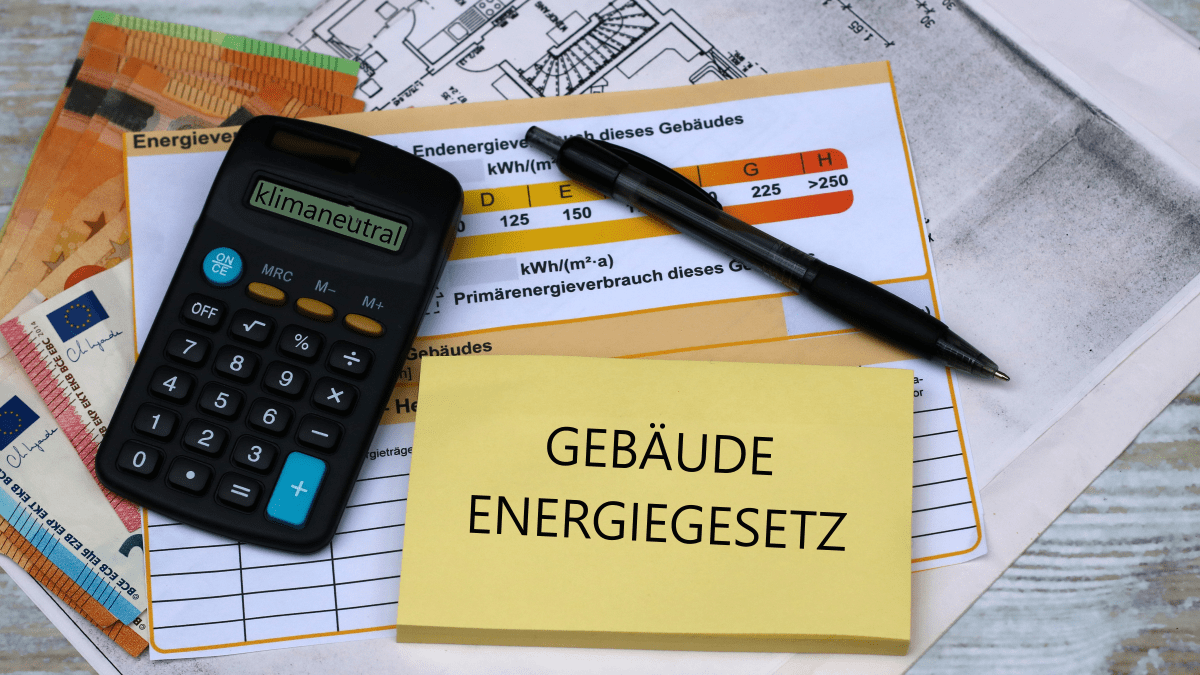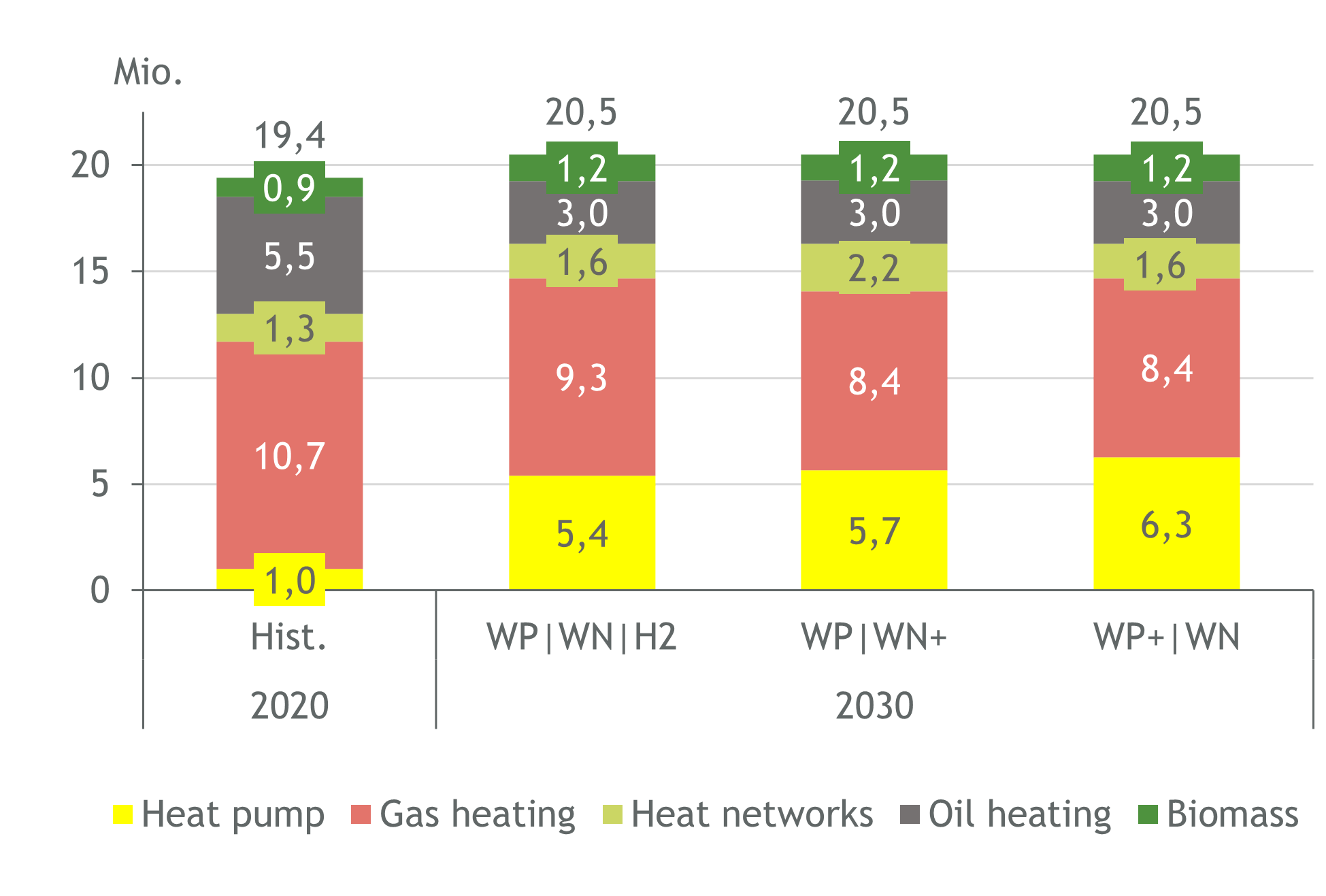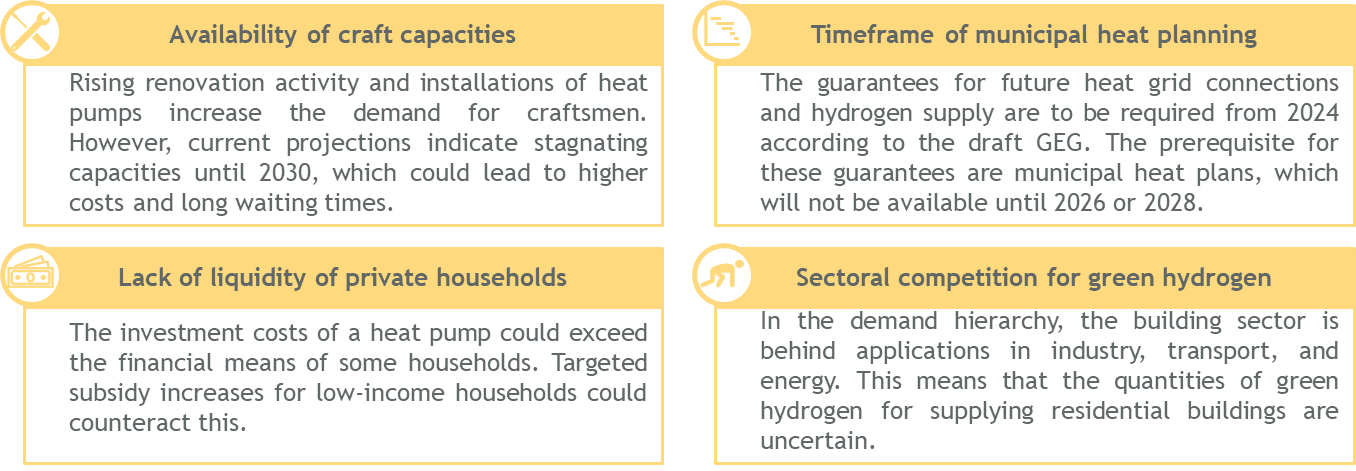
The draft of the Building Energy Act (GEG) aims to achieve climate targets in the building sector and reduce dependence on fossil resources. To accomplish this, an ambitious increase in the use of heat pumps to up to 6.3 million by 2030, an increase in the rate of building renovation to up to 1.6 percent, and an acceleration of district heating network expansion to up to 2.2 million connections would be necessary.
In the analysis “Impact of the Building Energy Act on Residential Buildings,” a team from the Institute of Energy Economics at the University of Cologne (EWI) examined three scenarios to assess how the building sector could develop by 2030 if the government draft of the GEG amendment from April 19, 2023, were implemented. The analysis focuses on the existing heating systems, the renovation rate, and greenhouse gas emissions in the residential building stock. The second part of the analysis examines critical success factors for the implementation of the GEG draft. The scenarios would require additional craftsman capacities, higher household investments, and rapid planning and implementation of new district heating projects, among other factors. The analysis was funded by the “Heat Transition Promotion Initiative” of the Society for the Promotion of the Institute of Energy Economics at the University of Cologne.
The EWI analysis examines how the GEG draft could influence investments in residential buildings. The draft includes direct compliance options (such as heat pumps and biomass) and indirect options (such as district heating networks and hydrogen-ready gas heaters). Starting from 2024, those who wish to install a new heating system that does not immediately meet the 65 percent threshold would require a guarantee from the gas distribution company or district heating network operator that the heating system will be operated with at least 65 percent hydrogen or that a district heating connection will be provided by 2035.

“In all considered scenarios, the share of heat pumps increases significantly, and the importance of district heating networks grows,” says Philipp Theile, Senior Research Associate at EWI. In the first scenario, network operators provide additional guarantees for the future supply of new gas heaters with hydrogen. In the second scenario, more residential buildings are connected to existing district heating networks, and new district heating networks are built. In the third scenario, guarantees for hydrogen supply are only provided in exceptional cases, and existing district heating networks are primarily densified, making heat pumps frequently the central compliance option. In the considered scenarios, the number of heat pumps could increase from 1.0 million in 2020 to up to 6.3 million by 2030. The number of district heating connections could rise from 1.3 million to up to 2.2 million if new district heating networks are built in addition to densification efforts. The number of oil and gas heaters could decrease by up to 30 percent.
The analyzed developments in the residential building stock could reduce greenhouse gas emissions by up to 62 percent by 2030 compared to 1990. The Climate Protection Act aims for a reduction of 65 percent. Additionally, the building sector includes commercial, trade, and service sectors, as well as commercial buildings. Although these are not the focus of the analysis, a stronger reduction could be achieved due to shorter renovation cycles and a stronger business decision-making basis. Therefore, achieving the goals based on the GEG draft is possible, but the scenarios cannot capture all critical success factors in implementation.
The analysis considers critical success factors. The increasing renovation activity and installations of heat pumps increase the demand for craftsmen. Current projections indicate stagnating capacities until 2030, which could lead to higher costs and longer waiting times. The timeframe for municipal heat planning could also hinder implementation. “According to the GEG draft, guarantees for future district heating connections and hydrogen supply should already be required from 2024,” says Max Gierkink, Manager at EWI. “The prerequisite for these guarantees is usually the municipal heat plans, which, according to the current status of the draft law, will only be available by the end of 2026 for major cities and 2028 for small towns.”
